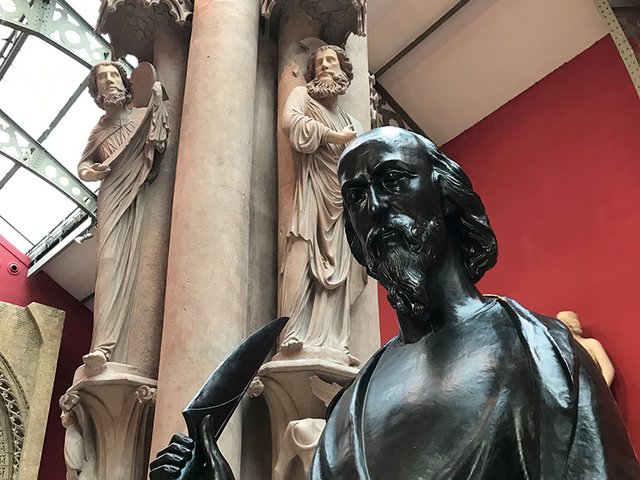Since December 2020, Axelle Ponsonnet, an architecture graduate from the Ecole Nationale Supérieure d’Architecture de Paris-Belleville, has been documenting the restoration of Notre-Dame de Paris in drawing and etching. The site, of course, has its official photographers. But, as befits a building on which construction first started in 1163, Ponsonnet’s approach has been altogether more ancient.
She has climbed scaffolding and spent days sat in corners not lit for hundreds of years to capture, in pencil, sanguine chalk and monotype, specific details and milestones. The wooden supports for the arches, a sculpted angel gracing the keystone of the vault, the 19th-century pelican chimera that stands between the bell towers, on the roof.
She has documented the magic of that brief moment when the chemicals used to clean the interior walls made visible traces of the ancient polychromy that once characterised the cathedral’s interiors. So, too, the more recent occasion when the youngest carpenter, 19-year-old Leonard Laforest, placed a bouquet of yellow mimosas on the newly installed roof structure, marking the return of the fabled roof, known as “the forest”.
Ponsonnet was hired as part of the Prunet Architecture & Urbanisme team working on the roof. At that point, Notre-Dame was still a charred shell, open to the elements. There were fears more of the cathedral could still collapse. Undertaking technical damage assessment studies by day, she started wandering around at night and on weekends, when the site’s 500-strong workforce had thinned and the space was quieter, to draw what she saw. “It was impressive, mystical even,” she says.
She had not exactly planned on getting into heritage restoration, the job just came up. Landing in the thick of this project straight after graduation was overwhelming, she says. Working on these drawings thus became a tool for better understanding the monument, for making it her own.
“These are not just views of the site. Each thing I’ve drawn I understand the work that has gone on to restore it and why it matters.”






